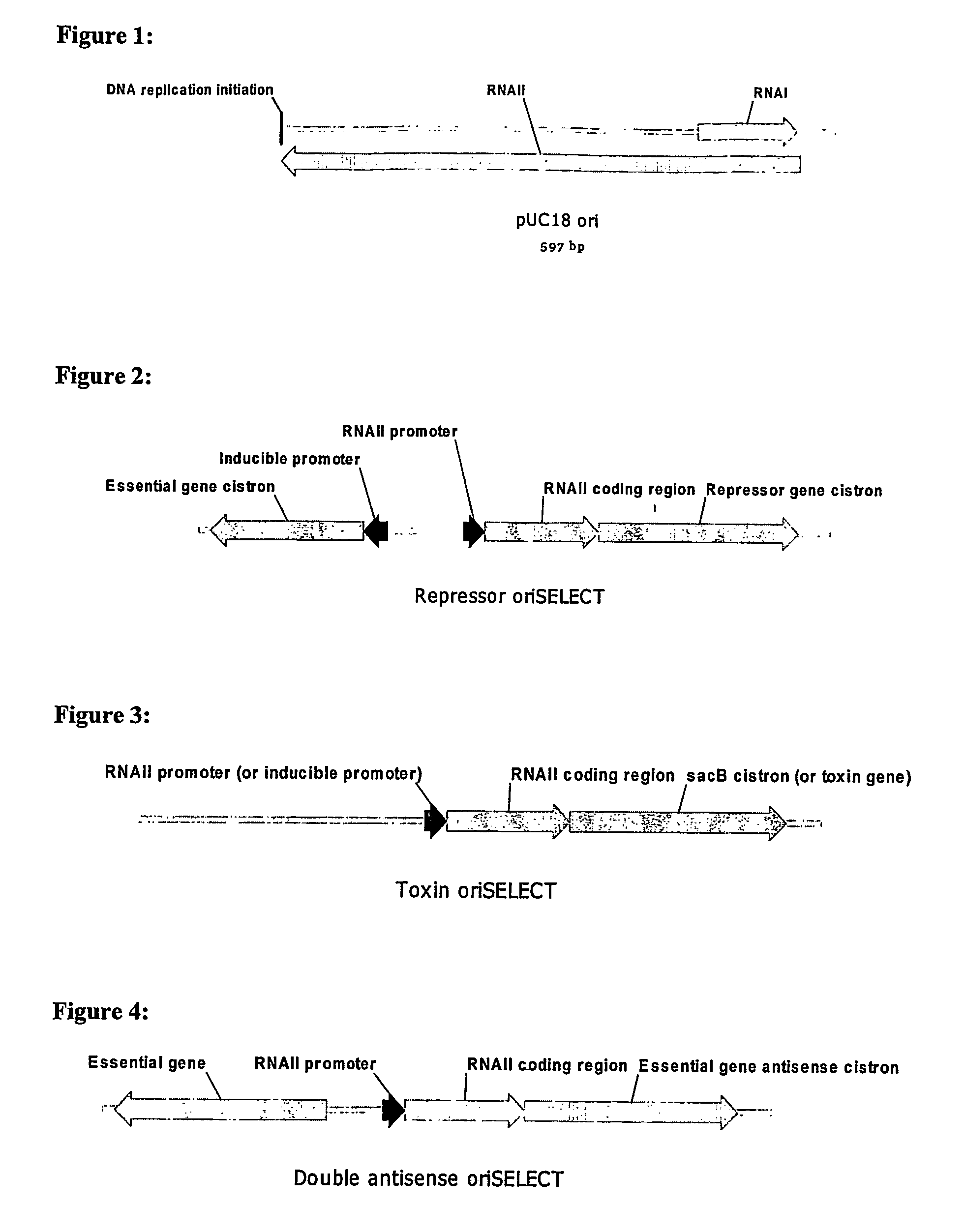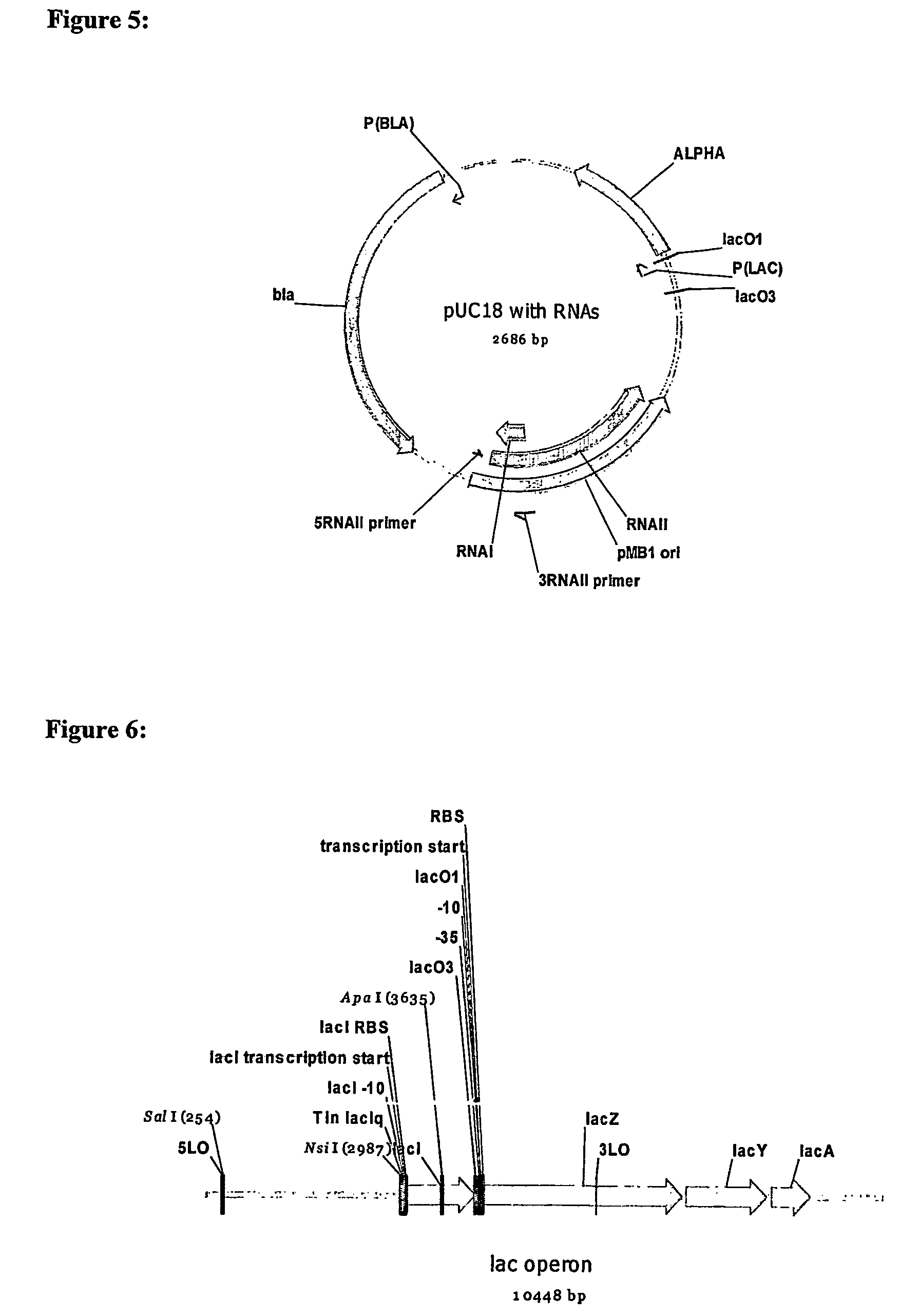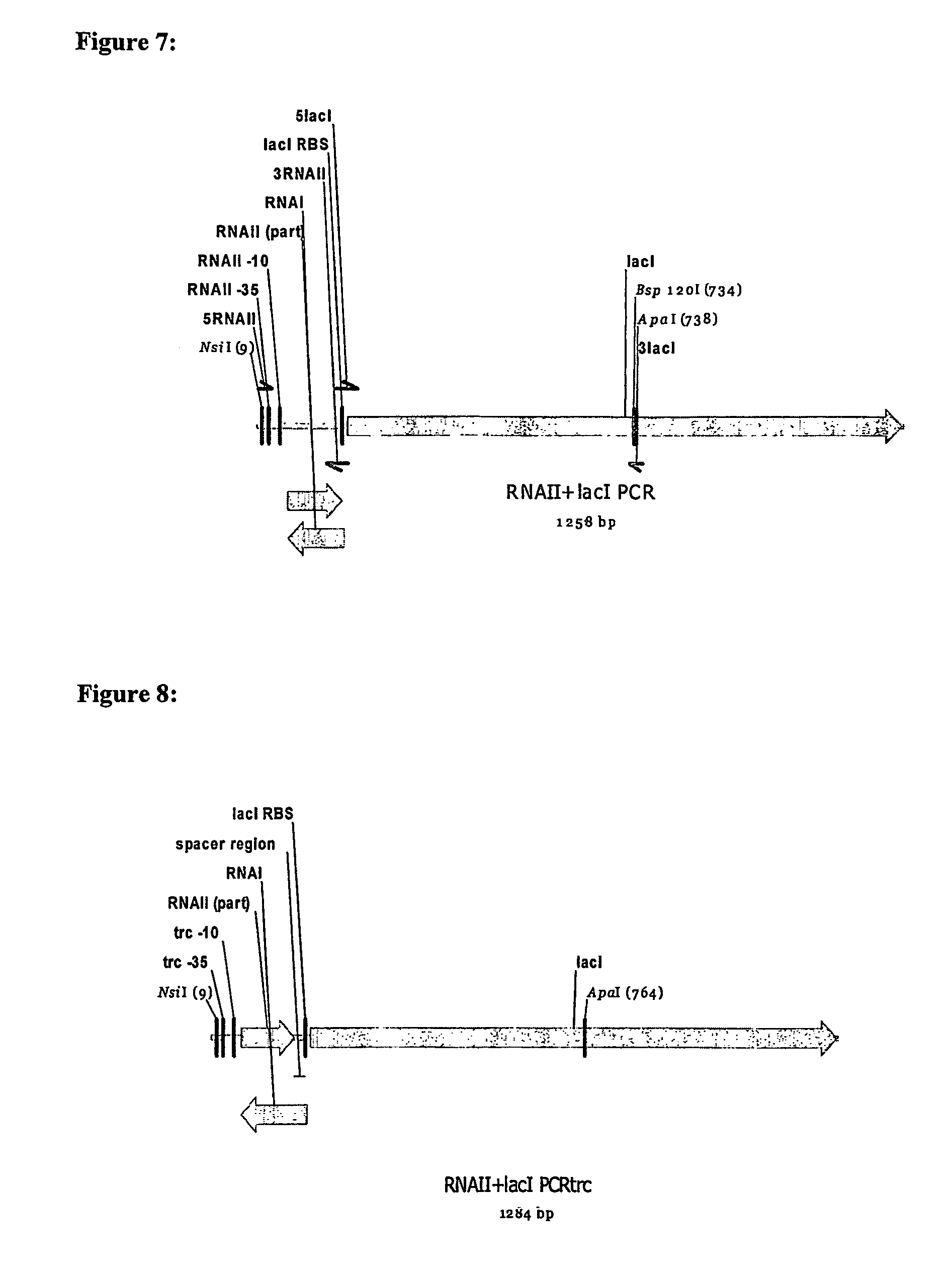Plasmid maintenance
a plasmid and maintenance technology, applied in the field of stable maintenance of plasmids, can solve the problems of inability to select plasmids, inability to ensure the stability of plasmids, and inability to facilitate plasmid selection mechanisms, so as to reduce the size of plasmids, reduce the risk of immune response, and increase the effective dose of plasmids
- Summary
- Abstract
- Description
- Claims
- Application Information
AI Technical Summary
Benefits of technology
Problems solved by technology
Method used
Image
Examples
example 1
Repressor oriSELECT
[0116]As shown in FIG. 2, the genome of a host cell for use in repressor oriSELECT contains an RNAII coding region linked to a repressor gene cistron, both of which are under the control of a constitutive RNAII promoter. The RNAII coding region linked to a repressor cistron may also be under the control of an alternative constitutive promoter, such as a promoter based on the E. coli −10 and −35 sequences and spacing found in the Trc promoter, as shown in FIG. 8. The host cell genome also contains a gene essential for cell growth under the control of an inducible promoter (not shown in FIG. 8).
[0117]In the absence of a plasmid, the repressor protein is expressed and represses the essential gene by binding to the operator / promoter controlling expression of the essential gene, inhibiting cell growth. Binding of plasmid-generated RNAI to the RNAII transcript in the RNAII-repressor mRNA fusion blocks translation of the repressor, allowing expression of the essential ge...
example 2
[0123]As shown in FIG. 3, the genome of a host cell for use in toxin gene oriSELECT contains a sacB gene, encoding levansucrase from Bacillus subtilis (Link et al, 1997 J. Bacteriol. 179: 6228-6237), placed downstream of RNAII. In the presence of sucrose, sacB synthesises a toxic product and the cell is killed unless a plasmid expressing RNAI is introduced. Another toxic gene regulated by an inducible promoter may be fused to the RNAII coding region instead of sacB.
[0124]A construct is engineered with an operon consisting of the RNAII coding region and a downstream gene encoding sacB. The 3′ end of the RNAII coding region is modified to incorporate the ribosome-binding site of sacB. A constitutive RNAII promoter drives gene expression. When this is inserted into the bacterial chromosome, the cell can grow in the absence of sucrose, but when sucrose is added, the toxin is produced and the cell dies. When the cell is transformed with a plasmid containing a ColEI-co...
example 3
Double antisense oriSELECT
[0126]As shown in FIG. 4, in double antisense oriSELECT, the host cell genome contains a gene which is essential for cell growth and an RNAII coding region linked to a gene which is antisense to the gene essential for cell growth.
[0127]An antisense version of an essential gene (e.g. dapD or fabA) is placed in an operon downstream of the region encoding RNAI, with the constitutive RNAII promoter driving transcription of both. The 3′ end of the RNAI coding region may be modified to incorporate part of the essential gene antisense transcript, such that it will be partially overlapped by RNAII. This construct is inserted into the bacterial chromosome.
[0128]The cell will now produce the RNAII and antisense RNA constitutively. The antisense RNA will bind to the essential gene mRNA, thereby preventing translation of the essential gene and cell growth.
[0129]When the cell is transformed with a plasmid containing a ColEI-compatible ori, RNAI will bind to the RNAII-an...
PUM
| Property | Measurement | Unit |
|---|---|---|
| stability | aaaaa | aaaaa |
| antibiotic resistance | aaaaa | aaaaa |
| composition | aaaaa | aaaaa |
Abstract
Description
Claims
Application Information
 Login to View More
Login to View More - R&D
- Intellectual Property
- Life Sciences
- Materials
- Tech Scout
- Unparalleled Data Quality
- Higher Quality Content
- 60% Fewer Hallucinations
Browse by: Latest US Patents, China's latest patents, Technical Efficacy Thesaurus, Application Domain, Technology Topic, Popular Technical Reports.
© 2025 PatSnap. All rights reserved.Legal|Privacy policy|Modern Slavery Act Transparency Statement|Sitemap|About US| Contact US: help@patsnap.com



